Natural Products to Eliminate Fleas: An Analysis
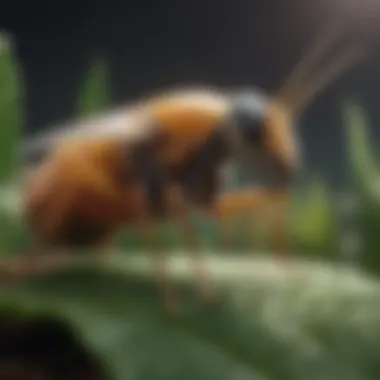
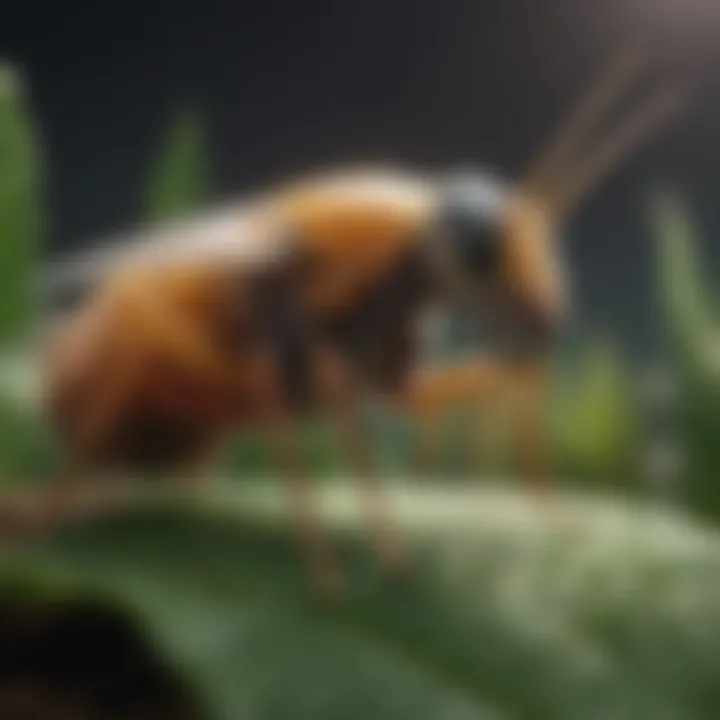
Intro
Flea infestations can pose significant challenges for homeowners, especially those who prefer natural solutions. These pests thrive in warm environments and come with a host of complications for both pets and humans. This article aims to explore natural products that can effectively eliminate fleas while minimizing health risks associated with harsh chemicals. Understanding how to identify pests accurately, taking preventive measures, and implementing safe treatment options are crucial steps in managing flea infestations.
Pest Identification
Fleas, particularly the Ctenocephalides felis species, are the most common culprits in pet infestations. They are small, wingless insects with a compelling ability to jump long distances. Adult fleas typically range from 1 to 3 mm in length. They have a hard outer shell, which protects them while feeding on the blood of their hosts.
Detailed descriptions of common pests
Identifying fleas requires attention to detail. Adult fleas are often dark brown or black, making them difficult to spot against similar surroundings. However, it’s their larvae that can signal a potential problem. These larvae resemble tiny white worms and can be found in areas where pets frequent.
Signs and symptoms of infestations
Recognizing an infestation isn't always straightforward. Here are some common signs that indicate a flea problem:
- Increased scratching: Pets may excessively scratch or bite their skin.
- Flea dirt: This consists of flea feces resembling tiny black specks, often found on pet bedding.
- Unexpected behavior: Pets may show signs of agitation or discomfort.
"Early detection is key in managing flea infestations effectively."
Prevention Strategies
Preventive measures can significantly reduce the chances of flea infestations. Maintaining a clean home and yard is essential.
Home maintenance tips for pest prevention
- Regular vacuuming: This helps remove flea eggs, larvae, and adults from carpets and furniture.
- Washing bedding: Frequent washing of pet bedding in hot water eliminates pests and their eggs.
- Outdoor cleanliness: Keep your yard trimmed and free of clutter to reduce flea-friendly habitats.
Natural deterrents and barriers
Utilizing natural deterrents can keep fleas at bay without relying on chemical pesticides. Possible options include:
- Diatomaceous earth: This natural powder can be sprinkled on carpets to dehydrate fleas.
- Essential oils: Lavender and cedar oils have repellent properties. Mixing them with water can create an effective spray.
Treatment Options
When it comes to treating flea infestations, homeowners may find themselves weighing the benefits of chemical versus natural solutions. Understanding both approaches is essential for informed decision-making.
Overview of chemical vs. natural treatments
Chemical treatments are often quick in eliminating fleas but may carry risks. They might harm pets or humans if misapplied. Conversely, natural treatments usually require more time but can be safer for the household.
Step-by-step guides for DIY treatments
For those inclined towards natural solutions, here are simple DIY treatments:
- Flea traps: Create traps using shallow dishes filled with soapy water and place them where fleas are spotted. The fleas are attracted to the light and will drown.
- Homemade flea spray: Combine water with vinegar or essential oils in a spray bottle. Apply this mixture to your pet's coat or around the home to deter fleas.
By understanding the specific characteristics of fleas and engaging in proactive measures, homeowners can effectively manage and eliminate flea problems using natural products.
Preamble
The issue of flea infestations is more than just a nuisance for many homeowners. Fleas can cause discomfort to pets and pose potential health risks to humans. They breed rapidly and can easily invade a house, creating a persistent problem. Therefore, addressing this issue effectively is essential. In this article, we examine natural products that can successfully eliminate fleas without relying on harsh chemicals. These alternatives are essential for environmentally conscious homeowners and can often be just as effective as conventional methods.
Understanding Fleas
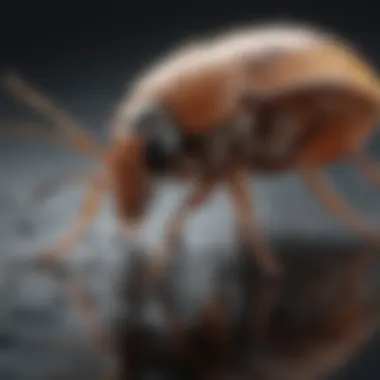
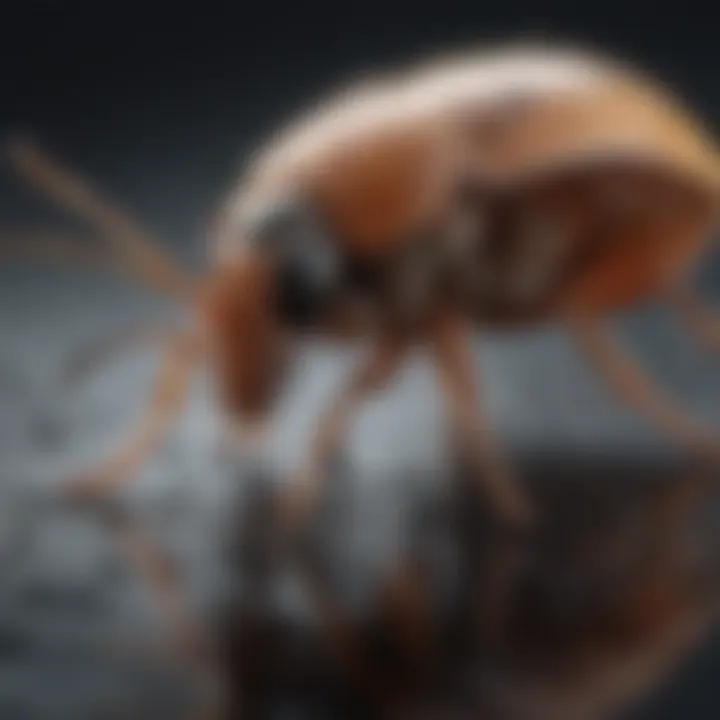
Fleas are small, wingless insects that feed on the blood of mammals and birds. Their life cycle includes several stages: egg, larva, pupa, and adult. A single flea can lay hundreds of eggs in its lifetime, which can lead to large infestations if not managed properly. Fleas prefer warm, humid environments and can hide in carpeting, bedding, and furniture.
Identifying a flea problem requires careful observation. Signs include itching in pets, flea dirt, and the presence of tiny black insects. It is crucial for homeowners to act swiftly upon recognizing these signs to prevent further infestation.
The Importance of Natural Solutions
With an increasing awareness of the dangers posed by chemical pesticides, natural solutions are gaining traction. They provide several benefits worth considering. First, natural products tend to be safer for pets and children, reducing the risk of exposure to harmful substances. Second, they are often less expensive and easily accessible compared to commercial products.
Moreover, many natural methods can integrate seamlessly into regular home cleaning routines. This continuous preventive approach keeps flea populations in check and minimizes recurrence. Overall, adopting a strategy that includes natural solutions not only addresses the immediate issue but promotes a healthier home environment in the long run.
Common Flea Species
Understanding the common flea species is essential for homeowners dealing with flea infestations. Different species adapt to various hosts, and knowledge about these species can greatly enhance the effectiveness of elimination strategies. Each species has unique behaviors and life cycles that influence the choice of treatments. Insights into flea biology help in crafting prevention and treatment plans tailored to specific situations. Effectively managing these pests starts with recognizing the species involved in your environment.
Cat Flea
Cat fleas, known scientifically as Ctenocephalides felis, are the most prevalent species found on domestic cats and dogs. They thrive in temperate and tropical regions, and their adaptability makes them frequent nuisances in households with both pets and humans. Cat fleas can reproduce rapidly, laying hundreds of eggs that fall off into carpets, bedding, and upholstery.
In terms of feeding habits, cat fleas primarily target warm-blooded animals, drawing blood to sustain themselves and lay eggs. Their bites can lead to discomfort and allergic reactions in pets and humans alike. Furthermore, these fleas act as vectors for tapeworms, making their control even more crucial for those who share their homes with both pets and children.
To effectively manage cat fleas, consider using a mix of preventive measures, including regular grooming, vacuuming, and the application of natural repellents that specifically target this species.
Dog Flea
The dog flea, scientifically known as Ctenocephalides canis, is less common than the cat flea but still poses a significant threat to households with dogs. Dog fleas exhibit similar life cycles and feeding behaviors as cat fleas, including rapid reproduction. They prefer canines as hosts but can also bite humans and other animals, leading to potential discomfort.
Identification of dog fleas can be tricky, as they can be confused with cat fleas. However, they tend to be slightly larger than their cat counterparts. Like cat fleas, their presence can lead to skin irritations, hair loss, and stress for pets.
Proactive management, including regular washings of pet bedding and environment treatments with natural options, will mitigate the impact of dog fleas significantly.
Human Flea
Human fleas, identified as Pulex irritans, are less common but do exist. They prefer to live on humans and wild animals, often appearing in unsanitary conditions. Human fleas can bite and feed on people, resulting in itchy welts and irritations.
These fleas are particularly challenging to eradicate due to their ability to migrate from one host to another. Their bites can also carry the risk of secondary infections when scratched, which can lead to more severe skin issues.
To manage human fleas, focus on environmental hygiene, proper grooming, and utilizing effective natural remedies that target and repel them. Keeping living spaces clean and free from debris will deter these pests and help in creating an inhospitable environment for them.
Understanding these three flea species is vital for targeting effective removal methods. Each species requires specific approaches, and leveraging insights into their habits enhances the chances of successful treatment.
Natural Repellents and Insecticides
Natural repellents and insecticides play a crucial role in managing flea problems without relying on harsh chemicals. These products are not only effective in repelling or killing fleas but also offer a safer alternative for households with pets and children. Understanding these natural solutions helps homeowners make informed choices that are both environmentally responsible and effective for pest control. By harnessing natural compounds, one can minimize chemical exposure and foster a healthier living space.
Essential Oils
Essential oils have emerged as popular natural repellents for fleas. Their concentrated nature contains active compounds that can disrupt the life cycle of fleas and deter them from infesting a home or pet. Below are three notable essential oils known for their efficacy against fleas.
Peppermint Oil
Peppermint oil is well-regarded for its strong scent that fleas find repulsive. The primary characteristic of peppermint oil is its high menthol content, which not only effectively repels fleas but may also soothe skin irritations caused by bites. Additionally, the oil has antibacterial properties that can benefit pets with existing skin issues. However, one deserves caution as excessive use might irritate sensitive animals. A diluted solution works best for most applications.
Lavender Oil
Lavender oil is often recognized for its pleasant aroma, but it is equally effective against fleas. The oil's primary attributes include its calming effect and its ability to disrupt flea activity. Many people find lavender oil easy to incorporate into their routines, whether through sprays or diffusers. This versatility makes it a beneficial choice. Nevertheless, some pets might be sensitive to strong scents, so it’s advisable to monitor their reactions when using lavender oil.
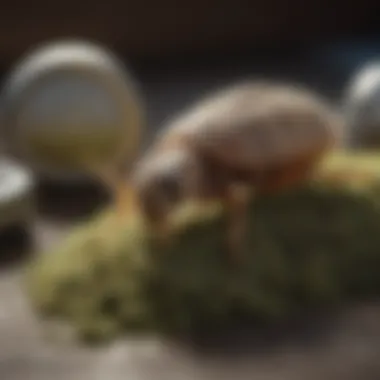
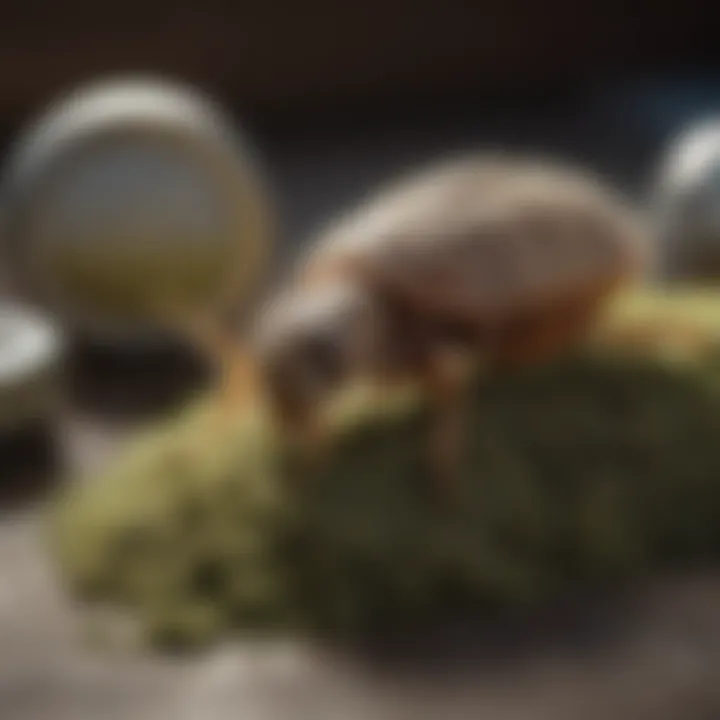
Eucalyptus Oil
Eucalyptus oil stands out for its powerful scent and flea-repelling characteristics. The oil contains compounds like cineole, known for repelling various pests. Its use not only helps in minimizing flea populations but also promotes respiratory health in pets and humans alike. This dual advantage makes eucalyptus oil a practical choice. Yet, like other essential oils, eucalyptus oil needs dilution before application on fur to avoid any adverse reactions.
Vinegar Solutions
Vinegar has long been touted as a natural remedy for multifarious household issues, including flea infestations. The acidity in vinegar makes it unpalatable for fleas, effectively deterring them from settling in your home or on your pets. Two varieties often used are apple cider vinegar and white vinegar, each having its unique advantages.
Apple Cider Vinegar
Apple cider vinegar is particularly praised for its effectiveness in flea treatment. The key characteristic of this vinegar is its acetic acid content, which fleas find repulsive. When used in a diluted spray form, it can be applied to pet fur or around areas of the home. Many also claim it helps in maintaining the pH level of pet skin, promoting overall health. However, a drawback is the strong odor, which may deter some pet owners.
White Vinegar
White vinegar serves as another excellent option for flea control. Its primary characteristic is its affordability and availability. White vinegar can often be mixed with water to create a flea-repelling spray. One advantage is its straightforward application without leaving residue. Still, like apple cider vinegar, it has a rather strong smell that some may find unpleasant.
Diatomaceous Earth
Diatomaceous earth consists of fossilized remains of tiny aquatic organisms called diatoms. This natural powder serves as a very effective insecticide by physically damaging flea exoskeletons upon contact. When fleas come into contact with diatomaceous earth, they become dehydrated and die within a few hours. This method offers a mechanical approach to pest control, differing from chemical insecticides.
Diatomaceous earth is considered safe for pets and humans if food-grade quality is used. It can be applied in areas where fleas reside, such as carpets, pet bedding, and hard floors. However, a key consideration is that it should not be inhaled, as it can irritate the lungs. Always ensure to apply it carefully, managing the dust during application.
Homemade Flea Treatments
Homemade flea treatments provide a practical solution for those seeking to maintain a flea-free environment without resorting to harsh chemicals. The importance of homemade methods lies in their accessibility, affordability, and the ability to control the ingredients used. Many homeowners prefer to create their own treatments instead of relying on commercially available options, which may contain additives that can be harmful to pets and children. By using natural ingredients, these remedies not only aim to eliminate fleas but also reduce the risk of side effects associated with synthetic products.
Flea Collars
Flea collars are a popular homemade option due to their simplicity and effectiveness. To create a flea collar, you can use a fabric strip infused with essential oils known for repelling fleas. For example, lavender oil and peppermint oil can be used for their natural repellent properties. Simply take a cotton or linen strip and soak it in a mixture of carrier oil and essential oil, then allow it to dry fully. After drying, wrap the collar around your pet’s neck, ensuring it is secure but not too tight. This method not only helps keep fleas away, but it also provides a pleasant scent.
Flea Baths
Flea baths can be an effective way to eliminate fleas on pets. A homemade flea bath can be prepared using ingredients that are safe for both pets and humans. A common recipe involves mixing a mild dish soap with water and adding a few drops of essential oil such as rosemary or eucalyptus. When giving your pet a bath, lather the soap solution all over their body, making sure to target areas where fleas tend to hide, such as behind the ears and under the belly. Rinse thoroughly and repeat if necessary. This method cleans and soothes your pet's skin while effectively removing fleas.
Flea Traps
Creating flea traps is a smart strategy for monitoring and reducing flea populations in your home. A simple homemade flea trap can be made using a bowl of soapy water placed under a night light or a lamp. Fleas are attracted to the light and will jump into the soapy water, where they cannot escape. A more advanced trap can include adding a few drops of dish soap to the water, enhancing the effectiveness by breaking the surface tension. Set these traps in areas where you notice flea activity, and check them regularly. By using flea traps, you can significantly reduce the number of fleas in your environment, providing an easier process for controlling infestations.
Important Note: Always test any homemade solution on a small area of your pet's skin first to ensure no allergic reactions occur.
Preventative Measures
Preventing fleas from infesting your home and pets is crucial. This is because elimination can be often more challenging than prevention. Incorporating preventative measures can save you time, money, and effort in the long run. It is about creating an environment that is less conducive to flea reproduction and survival. These measures not only protect your pets but also maintain a healthy living space.
Regular Grooming
Regular grooming of your pets plays a significant role in preventing fleas. Brushing your pets' fur helps to remove any fleas or eggs before they become a larger problem. It is essential to use the right tools. A fine-tooth comb or a flea comb is effective in capturing fleas and debris. Grooming also allows you to examine the skin closely for any signs of flea bites or irritation. Keep an eye out for excessive scratching as this can indicate a flea presence.
Additionally, setting a grooming routine, ideally once a week or more, can create a habit that benefits both you and your pet. It can be a bonding time. You may also consider using natural flea repellents during grooming sessions, such as essential oils diluted with a carrier oil. However, make sure to check which oils are safe for your pet.
Cleaning and Vacuuming
Cleaning and vacuuming are foundational aspects of flea prevention. Fleas thrive in environments with debris and pet hair, so regular cleaning can significantly reduce flea populations. Vacuuming should be done frequently, especially in areas where your pets spend a lot of time. It is crucial to focus on carpets, rugs, and upholstered furniture since these are common hiding spots for fleas.
When vacuuming, ensure that you pay special attention to corners and under furniture. After vacuuming, immediately dispose of the vacuum bag or empty the canister outside to prevent fleas from re-entering the home.


Using hot water for washing pet bedding, blankets, and toys can also eliminate flea eggs and larvae. At a minimum, these items should be cleaned bi-weekly. A clean house is less appealing to fleas, making it harder for them to settle.
Regularly incorporating these preventative measures creates a barrier against flea infestations, making it easier to manage these pests in your home.
Overall, the emphasis on grooming and cleaning establishes an environment that reduces the chances of fleas establishing a foothold in your home. Each step taken reaffirms a commitment to a flea-free living space.
Safety Considerations
Understanding the safety considerations when using natural products for flea control is crucial. While these solutions are often perceived as gentler than chemical alternatives, they can still pose risks if not managed properly. Homeowners should evaluate both the methods and the substances they choose to ensure the well-being of their pets and family.
Impact on Pets
Pets are particularly sensitive to environmental shifts, including both chemical exposure and natural substances. Essential oils, though effective against fleas, can cause toxicity if ingested or improperly diluted. For example, oils like peppermint and eucalyptus, while beneficial, can lead to adverse reactions in cats if not used cautiously. It is pivotal for pet owners to:
- Consult with a Veterinarian: Before implementing any natural flea treatments, seek advice to understand the right dosages and methods for your specific animal.
- Monitor Behavior: After applying any flea deterrent, observe your pets for signs of distress, such as lethargy, excessive scratching, or changes in appetite.
- Use Safe Concentrations: When using essential oils or vinegar, always dilute them properly. High concentrations can be irritating to the skin and respiratory systems of pets.
Impact on Humans
While natural products may be safer for pets, humans are not entirely exempt from potential risks. Certain natural ingredients can cause sensitivities or allergies, especially in children and those with pre-existing conditions. For example, vinegar is a common natural flea deterrent, but its strong smell can be overwhelming in enclosed spaces. It is necessary to keep the below considerations in mind:
- Check for Allergies: Always verify whether anyone in the household has sensitivities to the natural products you intend to use.
- Ventilate Spaces: When applying natural flea control methods indoors, ensure good ventilation to prevent inhaling strong fumes, whether from essential oils or vinegar.
- Educate Family Members: Ensure that all household members, especially children, understand the importance of staying clear of treated areas until they are dry or the smells have dissipated.
"Natural does not always mean safe; always proceed with caution and informed knowledge to ensure protection for every member of your household."
In summary, while the allure of natural products for flea control is strong, the safety of both pets and humans should always be prioritized. Adopting a careful and informed approach will lead to effective flea management while minimizing potential risks.
Effectiveness of Natural Products
Natural products have gained attention as viable methods for managing flea infestations. Their importance lies not only in their effectiveness but also in the safety they offer compared to conventional chemical treatments. Homeowners often seek alternatives that do not expose their pets and family members to potentially harmful substances. The use of natural solutions like essential oils, vinegar, and diatomaceous earth can provide a balanced approach to pest control while aligning with health-conscious living.
The major benefits of natural products include:
- Safety for Pets and Humans: Many chemical treatments can have adverse effects on pets and children. Natural options generally have a lower risk profile, making them appealing to cautious homeowners.
- Environmental Considerations: Natural products are often biodegradable and do not contribute to environmental pollution like synthetic chemicals.
- Cost-Effectiveness: Many effective natural solutions can be made at home using common household items, reducing the need for expensive commercial products.
However, considerations must be taken into account. The effectiveness of these natural products can vary based on several factors, including the severity of the infestation, the species of flea, and the environmental conditions. Therefore, it is essential for homeowners to remain informed and adaptable in their approach.
"Natural solutions can empower homeowners to tackle flea infestations without compromising health or the environment."
Scientific Studies
Scientific research has increasingly focused on the efficacy of natural treatments for fleas, validating many anecdotal claims made by homeowners. Some essential oils, such as lavender and peppermint, have been studied for their insecticidal properties. For instance, a study published in the Journal of Medical Entomology found that Cymbopogon citratus, commonly known as lemongrass, demonstrated significant repellency against adult fleas.
Additionally, diatomaceous earth has been investigated for its ability to eliminate fleas upon contact. This natural substance works physically by damaging the protective outer layer of the insects, leading to dehydration and death. Its efficacy has been supported by various research papers, showcasing the potential of natural products in pest management.
Case Studies from Homeowners
Real-life examples underscore the effectiveness of natural products in flea control. Many homeowners report success after implementing various natural strategies tailored to their specific situations.
For example, one case study involves a family residing in a heavily infested area who decided to use a combination of apple cider vinegar and essential oils in a homemade flea spray. They diluted apple cider vinegar with water and added drops of lavender oil. After consistent application, they noticed a marked decrease in flea activity in their home and on their pets. This case illustrates how a simple, natural mixture can prove to be a potent tool against fleas.
Another homeowner used a diatomaceous earth treatment throughout their carpet and furniture. After several days, this approach significantly reduced flea populations. The homeowner highlighted the importance of thorough vacuuming prior to application to ensure optimal results.
Such case studies provide compelling evidence that natural products can be effective alternatives to traditional flea control methods. They highlight not only the success of these solutions but also the ingenuity of homeowners in creating sustainable pest management strategies.
Finale
The discussion on natural products to eliminate fleas underscores the necessity of adopting non-chemical solutions in pest management. With a growing awareness of the adverse effects of synthetic chemicals on both health and the environment, homeowners are increasingly seeking effective, safe alternatives for flea control.
Understanding the efficacy of various natural remedies, such as essential oils, vinegar solutions, and diatomaceous earth, is foundational for anyone facing flea infestations. These methods not only demonstrate potential effectiveness but also emphasize safety for pets and children, making them appealing to many households.
It is crucial to analyze scientific studies and real-life case studies to ascertain how these natural products perform in practical settings. Research shows that certain essential oils possess insecticidal properties, and anecdotal evidence from homeowners supports these findings with practical applications such as flea baths and homemade traps.
Furthermore, preventative measures highlighted throughout the article, such as regular grooming and thorough cleaning practices, offer proactive solutions to help mitigate future infestations. These practices are less intrusive and promote a healthy living environment, aligning with many households' growing preferences for natural cleaning and pest control approaches.



